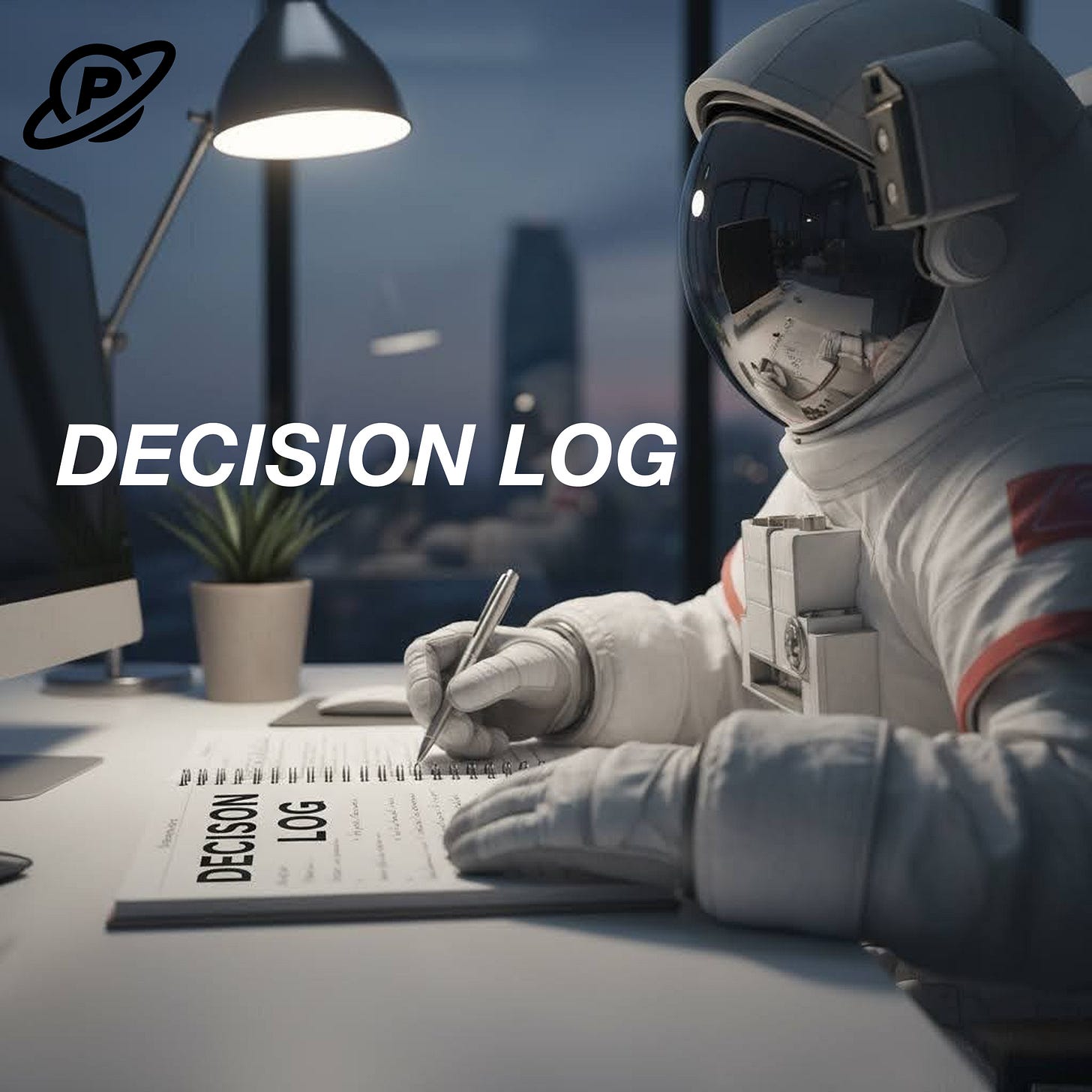The Attribute of Greatness: Decision Log
Your biggest mentor isn't someone else. It's the person you used to be.
We are making countless decisions everyday, from what to wear or eat to major decisions like where to live or whom to marry.
There is a frequently mentioned reference that we are making 35 thousand decisions daily, but it has no proof. The more recent study suggested it’s 122 “informed decisions” per day.
I’ve never bothered to estimate how many decisions I’m making daily, but I understand that the quality of my decisions directly impacts every aspect of my life. Even small improvements in decision-making skill can compound to huge differences over time.
There are two fundamental rules I follow when making important decisions:
Write down as much as you can about what you are deciding on.
Get back to learn from it.
Write Down
Writing is the way to take our chaotic, unorganised thoughts to make sense out of chaos. It’s extracting our thoughts from our brains.
Writing what you need to decide on clarifies what the problem is.
Our memory is not the best tool for analysing the past. We subjectively interpret reality, and most importantly, we forget! We forget a lot!
Writing down everything you understand at the time of making decision is important to reflect on afterwards.
In the tech world, there are structured ways of making architectural decisions, which serve as a great example: ADRs (Architecture Decision Record).
I write letters to myself to communicate between my past and my future self.
These letters include problems, decisions or just random streams of thoughts. I use them to process my ideas, but also to document decisions. It made me realise how much my perception evolves! I change my views, opinions and even reshape facts to match the stories I tell.
It doesn’t matter how you document your decisions, whether it’s just a simple note or a detailed template. But I encourage you to try writing it down, even a small memo will do, whatever suits you best.
Disclaimer: This approach works best for important decisions that deserve reflection. Don’t write down every choice. It creates decision fatigue and overthinking. Focus on decisions that feel significant or ones you face repeatedly
Get Back
Going back to past decisions is a learning opportunity for our future selves.
I use the #decision hashtag in my note-taking app to make sure I can easily find past decisions, both in work and life. The ones I properly wrote down and analysed. I don’t have a structured way of getting back, but it usually happens during my quarterly or yearly reviews
When I was a newly promoted engineering manager, I had to decide on the future of tech meetings for one unit inside the company.
I wrote it down (cut and edited for readability):
Dilemma: Cancel Tech-Unit Meeting?
Context: We don’t have volunteers to present technical topics and lead tech knowledge sharing sessions. The group is big and it feels like waste of time.
Possibilities:
Force people to present
Merge with other teams
Cancel
#decision: Cancel
In hindsight: When I get back to it 12 months later. There was one more possibility that I hadn’t thought of: lead by example and present something myself. Back then, I was afraid of talking to a group of more than 70 people on a video call, so it was too scary an option to put on the table. But I’ve learned the lesson, we revived the meetings, as the team missed a shared place for announcements and discussion. I added my regular updates on “state of the unit” to the monthly agenda.
Practice with Dilemmas
Two weeks ago, I was leading the lesson of “Real Problems, Real Time” of the recent cohort of Hacking Engineering Management. We went through dilemmas that were submitted by engineering managers (course participants).
We showcased how to approach decision-making and brainstorm possibilities during the workshop:
This is a simplified case from the workshop that we tackled together:
Dilemma: How can I effectively scale my development team, especially when key variables are beyond my control?
Context:
Init: Small core/senior-heavy team with four experienced members
Extension: Three less-experienced team members joined six months ago and are still onboarding
Further extension: Two experienced contractors are joining soon
Risk: Reducing team velocity
Then we listed together a few possibilities:
Possibilities:
Reducing the rate of hiring
Communicate possible drop in velocity
“Triples” matching people in a small onboarding group
Move part of the team to the more isolated modules of the system
Consult the situation with the team
Then, we asked people to make their bets on possibilities or a mix of them to focus on.
It wasn’t about determining the right call, but rather to show the manager who submitted the dilemma possible cases and kept it documented.
If you’d like to experience such sessions together with a group of fellow managers, I’ve have an announcement:
After the huge success of the first cohort of Hacking Engineering Management (sold out, 4.8/5 (19), solid testimonials), we are running another one in October:
For the next 48 hours, readers of Perspectiveship get a 35% discount! Use the code: PSHIPREADERS
You can find all the details here:
Summary
We often look for mentors and smart people and try to implement what they did. But we forgot that we can be an equally important source of learning for ourselves.
How do you learn from past decisions?
How often do you get back to past decisions?
Thanks for reading!
— Michał
Post Notes
Clear Thinking
For smaller, low-impact decisions, trusting your intuition is fine — you can even use a coin flip trick. But when something has a greater impact, clear thinking and a systematic approach are key.
Discover Weekly — Shoutouts
Articles that might help you explore new perspectives, which I’ve read recently:
What’s next for manager.dev and for me by
— “What if?” thought experiment that went live!The Ten Commandments of a Good CTO by
— With emphasis on part about learning from the past3 Brutal Tools That Expose Hidden Flaws in Every Strategy by
Connect
LinkedIn | Substack DM | Mentoring | X | Bsky



